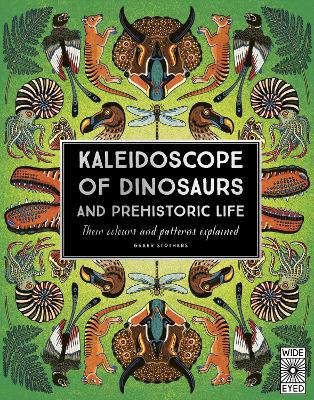Reviewed by annieb123 on
Kaleidoscope of Dinosaurs and Prehistoric Life is a new science based children's book on the biology behind the colors, shapes, and patterns of prehistoric creatures and nature. Due out 22nd March 2022 from Quarto on their Wide Eyed Editions imprint, it's 64 pages and will be available in hardcover format. It's unclear from the publishing info available online if there are currently any plans for electronic format.
Although aimed at young readers, there is a lot of information here which will probably be new to most of the audience, whatever their age. The text is accessible, accurate, and precise (to the best of current scientific understanding) and the information is explained logically and well. The book divides the animal kingdom by following the Linnaean classification system into vertebrates and invertebrates and then further by phyla, family, etc. The *types* of coloration and the reasons behind them are covered in two-page spreads with explanatory text and examples: fossilization, melanophores, juvenile to adult coloration, sexual dimorphism (different colors for male and female of the same species), the biomechanics behind color changing cells, and more. The illustrations are drawn throughout the book.
The entire book is beautifully illustrated with bright colors and clear pictures. The drawings are very simple, but clear enough to recognize and enjoy. It will provide a good resource for budding scientists to practice drawing for their field journals by copying some of the drawings in this volume. The art (according to the endpapers) was produced using risography, a term and process with which I was previously unfamiliar. The text is high contrast and easy to read.
Five stars. This would be a superlative selection for school or public library acquisition, youth nature/garden groups, scouts, library activity groups, for gifting, or for the home or homeschooling library.
Disclosure: I received an ARC at no cost from the author/publisher for review purposes.
Reading updates
- Started reading
- 13 February, 2022: Finished reading
- 13 February, 2022: Reviewed
